When planning a wedding, the choice of flowers can greatly influence the overall aesthetic and ambiance of the ceremony. Among the myriad options, Passiflora 'White Wedding' stands out not only for its visual allure but also for its rich symbolism and practical benefits. This tetraploid hybrid, characterized by its large, fragrant white blooms, is particularly suited for adorning lattice work and trellises, creating a picturesque setting. Developed by Roland Fischer in Germany, this passionflower variety encapsulates themes of faith, love, and devotion, making it an ideal selection for bridal bouquets and centerpieces. But what truly sets this flower apart?
Flower Overview
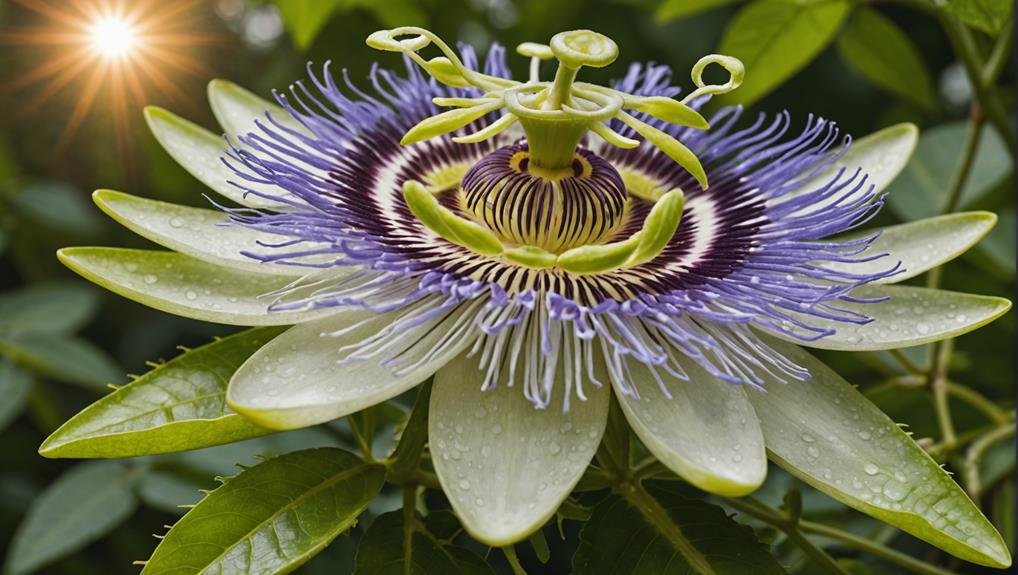
Understanding the characteristics and benefits of different flowers is essential for creating an enchanting wedding ambiance. Passiflora 'White Wedding' stands out as a remarkable choice for wedding decorations, particularly for summer celebrations. Developed by Roland Fischer in Hemer, Germany, this tetraploid hybrid is known for its large, white, and fragrant flowers, which bloom abundantly under long days and strong sunlight.
One of the significant advantages of Passiflora 'White Wedding' is its vigorous growth and robust vines, which are heavier and more resilient compared to other Passion Flower varieties. This makes it an ideal plant for climbing lattice work, fences, or trellises, adding a touch of elegance and sophistication to any outdoor wedding venue. Additionally, its light fragrance contributes subtly to the overall sensory experience without overwhelming the senses.
Passiflora 'White Wedding' also attracts pollinators, enhancing the natural beauty and ecological harmony of the garden setting. With its compact pot size and affordable cost, it offers excellent value for money, making it a practical yet stylish option for garden enthusiasts and wedding planners alike. This hybrid seamlessly combines aesthetic appeal with functional benefits, making it a top choice for wedding floral arrangements.
Physical Description
The Passiflora 'White Wedding' captivates with its large, pristine white flowers and a delicate, light fragrance, making it an ideal choice for enhancing summer garden aesthetics. As a tetraploid hybrid of Passiflora caerulea Constance Elliott, this variety showcases the elegant beauty typical of Passion Flowers. The blossoms are substantial and intricate, featuring a central corona of filaments that add to their visual appeal. Their light fragrance subtly enhances the garden's atmosphere, providing an olfactory complement to the visual display.
The vine of Passionflower 'White Wedding' is particularly notable for its robustness and vigor. It is heavier and more resilient than many other varieties, making it well-suited for various garden settings. This plant thrives in warm climates, benefiting from long days and strong sunlight, which encourage abundant blooming throughout the summer months. The foliage is lush and green, providing a vibrant backdrop for the striking white flowers.
In terms of care, Passionflower 'White Wedding' is relatively low maintenance. It requires regular watering and support structures to climb, such as trellises or arbors, to reach its full potential. This combination of minimal care and maximal impact makes it a popular choice among gardeners and landscapers alike.
Available Colour Varieties
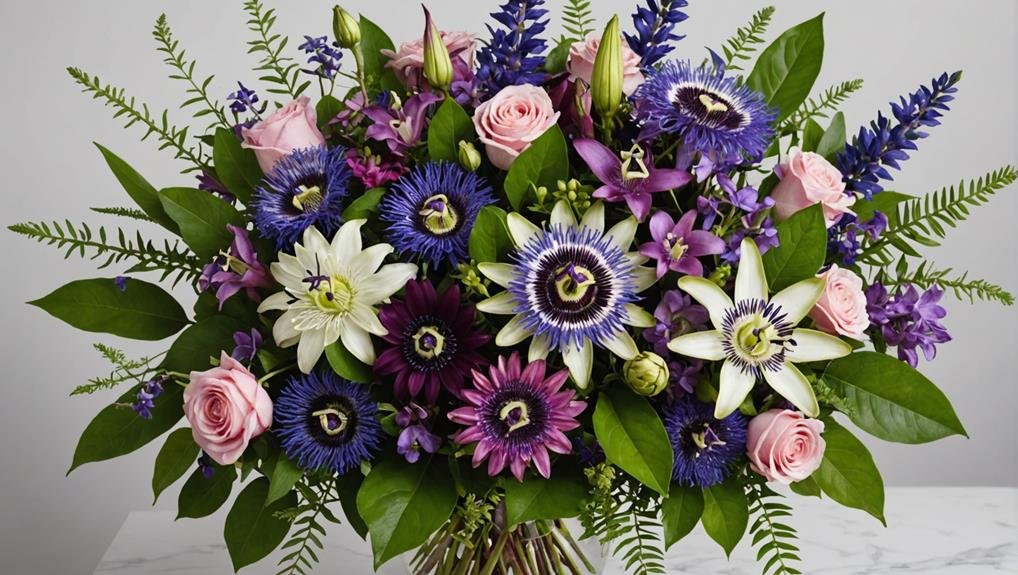
In addition to the pristine white blossoms of Passiflora 'White Wedding,' passionflowers are celebrated for their diverse range of color varieties, including blue, purple, pink, and red, each bringing unique visual appeal to wedding floral arrangements. This floral diversity allows for creative and personalized bouquet designs, catering to various themes and preferences.
Different species and hybrids of passionflowers exhibit unique color combinations and patterns, enhancing their charm and versatility in wedding decor. Blue passionflowers, such as Passiflora caerulea, add a striking and vibrant touch to any floral arrangement. Their intense hue pairs well with both classic and contemporary wedding palettes.
Purple, pink, and red passionflowers offer a romantic and colorful option for wedding bouquets and decorations. These hues can be blended seamlessly to create visually enchanting displays that evoke a sense of romance and elegance. The varied colors can be used to complement or contrast other floral elements, adding depth and dimension to the overall aesthetic.
- White passionflowers, like Passiflora 'White Wedding,' are popular for their elegant and classic appearance.
- Blue passionflowers add a vibrant touch to floral arrangements.
- Purple, pink, and red varieties offer romantic and colorful options.
Latin Name and Taxonomy
Known for their intricate flowers, Passiflora 'White Wedding' belongs to the Passifloraceae family and exemplifies the botanical elegance inherent to the Passiflora genus. This variety is a tetraploid hybrid, a creation of Roland Fischer from Hemer, Germany. The hybridization process has endowed Passiflora 'White Wedding' with larger flowers and increased vigor, making it a standout choice for events and weddings.
The scientific classification of Passiflora 'White Wedding' can be broken down as follows:
| Classification | Details |
|---|---|
| Family | Passifloraceae |
| Genus | Passiflora |
| Hybrid Variety | Passiflora 'White Wedding' |
Passiflora 'White Wedding' showcases a vigorous climbing habit, supported by twining tendrils that allow the plant to ascend structures with ease. Its foliage ranges from semi-evergreen to evergreen, providing year-round visual interest. The white, fragrant flowers bloom in the summer, offering both aesthetic appeal and a light fragrance that enhances any setting.
This specific variety of Passiflora is particularly favored for its ability to add an elegant touch to weddings and special events. The combination of its stunning white blooms and its ability to thrive in various conditions makes it a versatile and attractive option for floral arrangements.
Geographical Origins
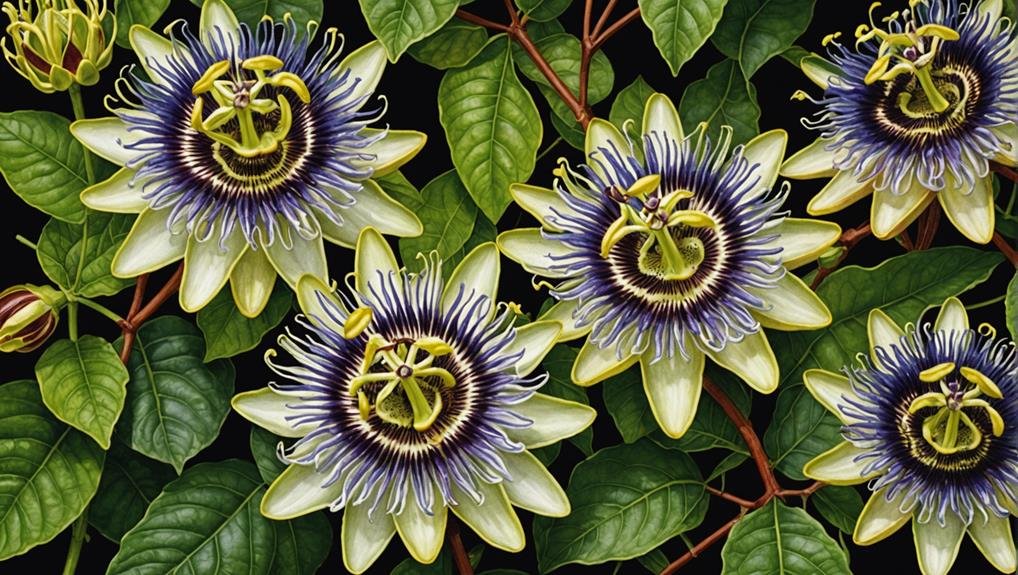
Originating in Hemer, Germany, Passiflora 'White Wedding' was meticulously bred by Roland Fischer to combine the robust characteristics of P. caerulea Constance Elliott with enhanced floral attributes. Fischer, renowned for creating tetraploid hybrids, aimed to develop a passionflower that would not only be visually striking but also resilient and easy to maintain.
This particular hybrid was specifically designed to cater to summer garden enthusiasts. The geographical roots of Passiflora 'White Wedding' play a significant role in its characteristics and growth preferences. Hemer's climate and soil conditions provided an ideal breeding ground, enabling the development of this vigorous and showy climber.
- Climate Adaptation: Thrives in warm climates, making it suitable for summer gardens.
- Sunlight Requirements: Needs regular sunlight to flourish.
- Maintenance Needs: Requires low maintenance, making it an attractive option for busy gardeners.
Passiflora 'White Wedding' benefits from the robust genetic makeup of its parent species, ensuring it can adapt to various environmental conditions while maintaining its ornate beauty.
The plant's origins in Hemer, Germany, have endowed it with a unique blend of resilience and aesthetic appeal, making it a preferred choice for those seeking an elegant yet hardy addition to their gardens.
Season Availability
Summer's abundant warmth brings the peak blooming season for passionflowers, making them an exquisite choice for wedding arrangements. These vibrant, fragrant flowers are particularly abundant during the summer months, aligning perfectly with the timing of many weddings. Their seasonal availability guarantees that they are fresh and lively, providing an elegant and enchanting touch to wedding bouquets and decorations.
One variety that stands out during this season is the Passiflora ‘White. Known for its striking white blossoms, this variety adds a sophisticated and timeless elegance to any floral arrangement. The Passiflora ‘White's unique structure and delicate appearance make it a captivating addition, enhancing the aesthetic appeal of summer weddings.
The steady availability of passionflowers in the summer months allows for seamless incorporation into wedding themes and styles. Whether used as a focal point in a bouquet or as a delicate accent in larger arrangements, passionflowers contribute significantly to the overall visual impact. Their presence guarantees that wedding florals are not only seasonally appropriate but also imbued with a sense of freshness and vibrancy that complements the joyous atmosphere of summer celebrations.
Growing Conditions
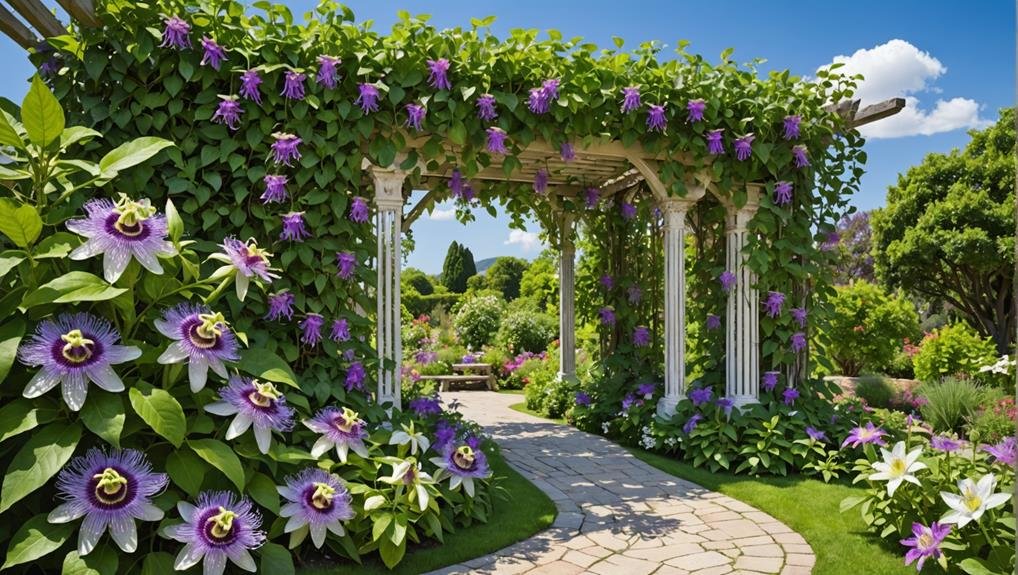
Passionflowers thrive in hardiness zones 9-11, where they benefit from full sunlight to partial sunlight exposure. These vibrant climbers can reach heights of 10-15 feet, making them ideal for adorning trellises, walls, fences, or arbors. The striking white flowers of the passionflower can greatly enhance the visual appeal of any garden, attracting butterflies with their fragrance and nectar.
To ensure prime growth, passionflowers require well-drained soil and deep, occasional watering. This prevents root rot and promotes a robust root system. Proper care also includes pinching terminal buds to encourage branching, resulting in more abundant blooming. Additionally, avoiding excessive fertilizer is vital, as it can lead to lush foliage but fewer flowers.
Here are key points to keep in mind:
- Light: Full sunlight to partial sunlight exposure.
- Soil: Well-drained soil is crucial.
- Water: Deep but occasional watering.
When cultivating passionflowers, it's essential to provide a supportive structure for their climbing habit. Regularly monitoring for pests and diseases will also help maintain the health of these plants.
Cultural Significance
Renowned for its intricate beauty, the Passionflower holds significant religious symbolism in Christian iconography. This unique flower's structure is often interpreted as representing elements of the crucifixion of Jesus Christ.
The ten petals and sepals are said to symbolize the ten faithful apostles, excluding Judas and Peter. The radial filaments are thought to signify the crown of thorns, while the three stigmas represent the three nails used in the crucifixion. Additionally, the five anthers are believed to correspond to the five wounds of Christ on the cross.
Beyond its Christian symbolism, the Passionflower is revered in various cultures for its associations with peace, tranquility, and spiritual enlightenment. Its vibrant colors and delicate petals not only captivate the eye but also convey deep symbolic meanings. These attributes make the Passionflower a popular choice for many significant occasions, including wedding ceremonies.
In the context of weddings, the Passionflower's symbolism of faith, love, and devotion adds a profound touch to the event. Its presence in bouquets and decorations serves as a reminder of the spiritual and emotional bonds being celebrated. The Passionflower, thereby, enriches the cultural tapestry of any wedding with its storied past and striking appearance.
Typical Use in Weddings
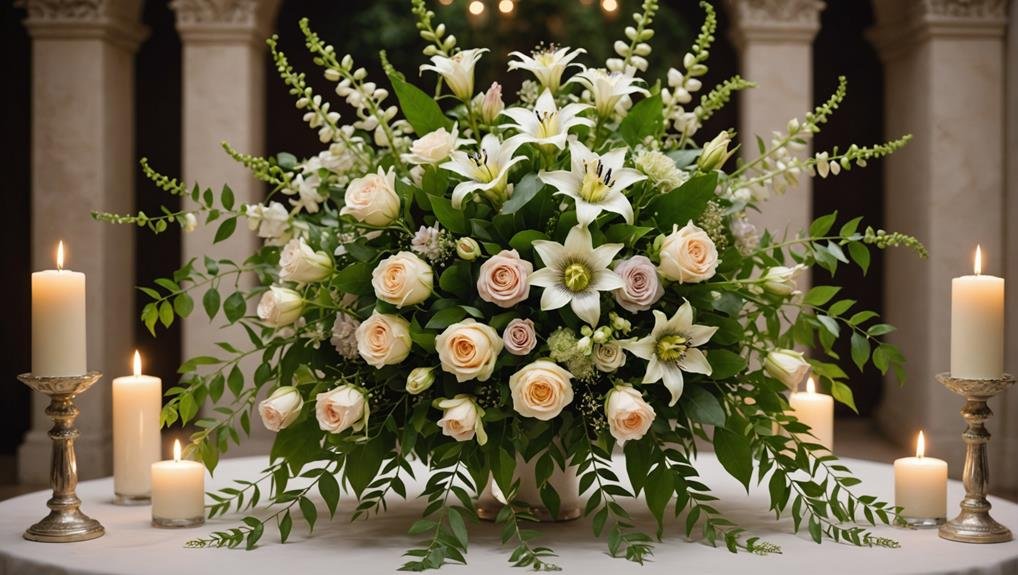
Incorporating passionflowers into wedding decor is a sophisticated way to symbolize love, faith, and passion. These flowers are renowned for their intricate and unique appearance, which adds an element of elegance and charm to any wedding setting. Their delicate beauty and powerful symbolism make them an ideal choice for couples who wish to infuse their celebration with deeper meaning.
Passionflowers can be seamlessly integrated into various aspects of wedding decor, enhancing the overall aesthetic and emotional resonance. Common uses include:
- Bridal Bouquets: Passionflowers can be woven into bridal bouquets, blending harmoniously with other flowers to create a stunning and symbolic arrangement.
- Centerpieces: Their striking appearance makes them perfect for centerpieces, offering a focal point that captivates guests and complements the wedding theme.
- Boutonnieres: Incorporating passionflowers into boutonnieres provides a subtle yet meaningful touch, symbolizing the groom's commitment and passion.
In addition to their aesthetic appeal, passionflowers carry significant emotional weight, making them a meaningful addition to wedding ceremonies. Their presence can symbolize the deep emotions and commitment inherent in marriage, offering a beautiful reflection of the couple's journey together. Whether paired with classic White blooms or other vibrant flowers, passionflowers bring a distinctive and heartfelt touch to wedding celebrations.
Alternative Flower Types
Exploring alternative flower types for weddings opens up a world of possibilities to create uniquely memorable floral arrangements that reflect personal style and thematic elements.
Among the popular alternatives to Passionflower are roses, peonies, dahlias, and orchids. Each of these flowers brings its own unique colors, shapes, and textures, allowing for diverse and enchanting floral compositions.
Roses, celebrated for their symbolism of love and romance, add a timeless elegance. Peonies, known for representing prosperity and good fortune, offer lush, full blooms that create a sense of abundance. Dahlias, with their intricate petal structures, signify elegance and can bring a sophisticated touch to any arrangement. Orchids, epitomizing beauty and luxury, provide an exotic flair that is both striking and graceful.
Consider mixing these flowers to add depth and variety to wedding bouquets, centerpieces, and other floral decorations. For example, combining the Constance Elliott variety of Passionflower, known for its stunning white blooms, with vibrant dahlias or peonies can create a visually striking contrast.
Consulting with a florist is essential to explore the availability, seasonality, and pricing of these alternative flower types, ensuring your wedding flowers are as beautiful as they are meaningful.
